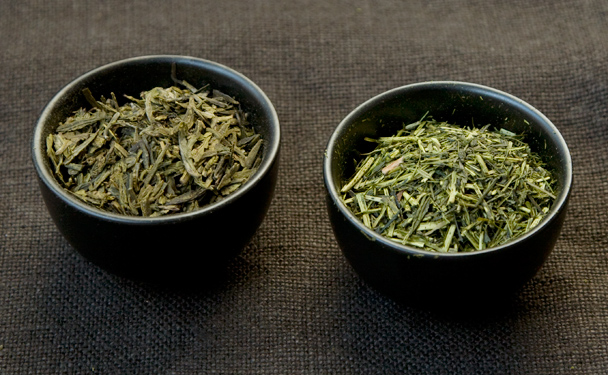I’m pragmatic enough to understand that no moment in my life will ever be more perfect than that first sip of o-cha on my first morning at the Tawaraya Ryokan in Kyoto. It was ten years ago. After a fragrant cedar bath and a blissful futon sleep, we lounged in our room as three robed women quietly slipped in to roll up our beds and serve breakfast. The iridescent green tea was lukewarm and transporting. It asked me to close my eyes. It brought me to a covered porch on a lake. It turned time into a silk thread and I could pull it along slowly or stop it or watch it go by.
I know I’ll never get that moment back. But at least I can try to come close, and I’ve spent a lot of time and some good money to get there. I have acquired small and large tetsubin for brewing, and tea bowls and soba cups for serving. I’ve imported many tins of sencha and gyokuro and matcha. I’ve driven my family crazy by warming cups and measuring the water temperature. (Of late there are a few nifty tools available to tea lovers, including an electric teapot that brings the water to whatever temperature you like.)
I’ve tried many Chinese teas but have always preferred the Japanese. Maybe it’s the volcanic soil, or that Japanese teas are steamed after picking, whereas Chinese are usually pan-dried. Whatever it is, a fine Japanese tea always conveys a strong sense of place. It’s sweet with a hint of the sea. It doesn’t confuse the tongue with impetuous high and low notes, but gently and richly rumbles along in the mid-range. (Along the way, I’ve found plenty of serious tea shops offering very fine and affordable tea. Just to mention two: I was very pleased with the Sencha Sampler from the Japanese producer Hibiki-an. For organic, I’m impressed with Rishi’s Organic Sencha.
I asked Winnie Yu, Director of Teas at Teance in Berkeley, CA, if she could try to win me over with a Chinese green. She knew just the one. Lu Shan Clouds and Mist is harvested from the top of always-misty Mt. Lu, in Jiangxi Province. It is utterly marvelous—sweet and light but with a sequence of notes that make you never want to swallow. The first Chinese green I’ve had that made me curious to learn more.
And there’s so much more to learn. I’m always on the lookout for exceptional green teas—so if you have a favorite, don’t hesitate to comment below.
Now, if we could only get some of our better restaurants to take tea as seriously as they do risotto, duck, and flan.




 Pinterest
Pinterest


